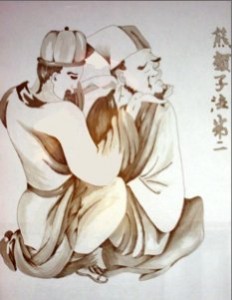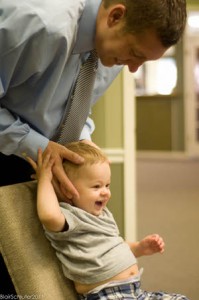Joint “manipulation” has been around for a very long time. Thousands of years ago it was done in China and called tui na or “push-grab”. Hippocrates even mentions it in ancient Greece saying, “one or more vertebrae of the spine may or may not go out of place very much. They might give way very little, and, if they do, they’re likely to produce serious complications and even death, if not properly adjusted”. However, the manipulation of ancient Greece and tui na of china are a far cry from the specific, scientifically applied spinal adjustment that chiropractors perform today.
In order to make a corrective adjustment we have to first find how the specific vertebra is subluxated. As Gonstead doctors, this is done by combining different methods of evaluation including static/motion palpation, instrumentation and x-rays. Each of these offers a vital piece of information that lets us know exactly where and how to adjust the spine (or extremity). The object of the adjustment is to restore the correct position and motion or normal biomechanical function to the joint, not just “put it back in place”. And as discussed earlier, achieving this reduces the irritation on the nerve decreasing pain and improving function. To make a corrective adjustment we take many factors into consideration. We must determine the key vertebra and which landmark on that vertebra must be contacted. Is it best to contact the vertebra with the doctor’s thumb, finger tip, pisiform or another anatomical location on the doctor’s hand? Then a precise line of correction that works with the design and function of the joints is essential for an easy, comfortable adjustment that is truly corrective. The “set up” is also key to this. The patient must be positioned just right and we have more than one apparatus or table we can use to achieve this. In fact, most of our neck adjustments are done with a patient sitting comfortably in a chair, just using a fingertip contact to set the vertebra easy. These are the main elements of an adjustment and of course there are many more but the point is that a chiropractic adjustment is very specific as opposed to a general manipulation. The general manipulation of a joint may give you the same sound and may even feel good for a little while, and there are reasons for this, but it will not create the same result. As for the sound, that is small amounts of gas being released within the joint capsule when it moves slightly, like when you pop your knuckles. Manipulating a joint can also feel good because you are stimulating mechanoreceptors which are a type of sensory receptor, but this pain relief doesn’t last for long. Just because you are manipulating a joint doesn’t mean that you are correcting it’s function such as a chiropractic adjustment.
There are several dozen defined chiropractic methods used to make corrective adjustments, each one different than the other but all similar in the fact that they have one purpose, to correct subluxations. We have found that the Gonstead Method is what works best for us. It is precise, specific and requires us to be meticulous in our evaluation and treatment of our patients. We believe that is what makes us unique.
D. D. Palmer, the founder of chiropractic, once said, “I am not the first person to replace subluxated vertebra, for this art has been practiced for thousands of years. I do claim, however…to create a science which is destined to revolutionize the theory and practice of the healing arts.”

Dr. Jason Schluter is a Chiropractor in Tulsa, OK at Schluter Chiropractic.
Schluter Chiropractic is conveniently located off Memorial Drive in Tulsa, Oklahoma and provides quality chiropractic care to Tulsa and the surrounding areas.
To schedule an appointment, call (918) 664-3571 or visit www.DrSchluter.com.






